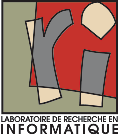Designing Interactive Tools For Creators and Creative Work
Résumé
Creative work requires the learning and practice of advanced skills, perceptual, motor, cognitive, and aesthetic, but also relies on the use of diverse materials and sophisticated tools, both physical and digital. For these reasons, creative work is a major source of inspiration for research in Human-Computer Interaction (HCI).
My habilitation thesis looks at the work of creators: artists with years of professional practice but also learners, casual makers, and novice designers. I review the results of a series of studies, where I investigate how creators combine physical and digital representations and how these representations evolve throughout their creative process. My goal is to highlight key challenges for innovation in HCI and foresee how future interactive technologies can improve or extend current creation practices.
I focus on three widespread creation activities: drawing, physical modeling, and music composition. For these activities, I present examples of systems that assist the creation process in various ways: (1) they help novices practice well-established drawing-by-observation techniques through augmented photograph models; (2) they facilitate the image production of professional illustrators while they work on paper; (3) they enable modelers to synchronize their physical models with their digital representations; (4) they allow designers to embed interactive electronics in stretchable fabrication materials; and (5) they let composers of contemporary music extend their digital environments with personal vocabularies drawn on paper with physical ink.
The common goal of all these systems is to provide flexible representations, personal vocabularies, and effective interaction modalities that, on one hand, encourage exploration, and on the other hand, assist the transformation of early ideas to high-precision creative artifacts. Through the above examples, I discuss tradeoffs between sketched-based representations that support expression and structured representations from which computers can easily extract meaning. Although the greatest part of the thesis concentrates on artistic activities, I also examine how informal, sketch-based representations can benefit other tasks, such as data-annotation and data-analysis tasks. I conclude with lessons for HCI research and reflect on directions for future work.
Domaines
Interface homme-machine [cs.HC]| Origine | Fichiers produits par l'(les) auteur(s) |
|---|
Loading...

